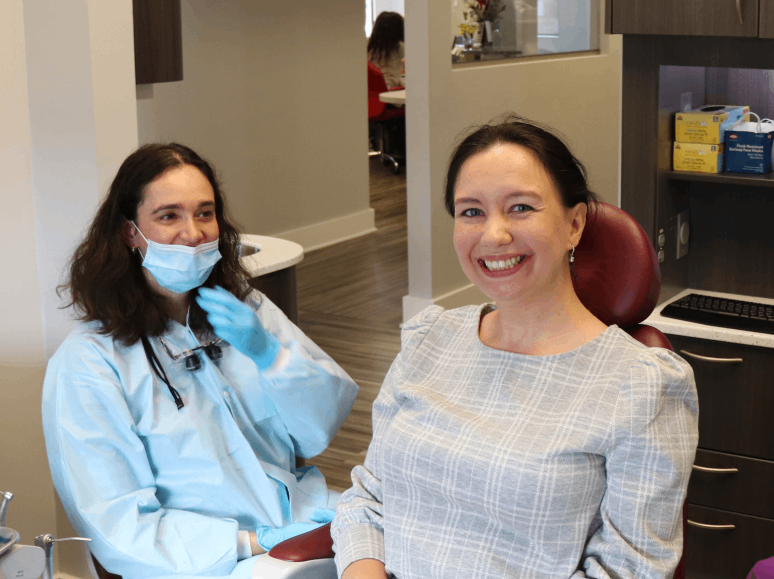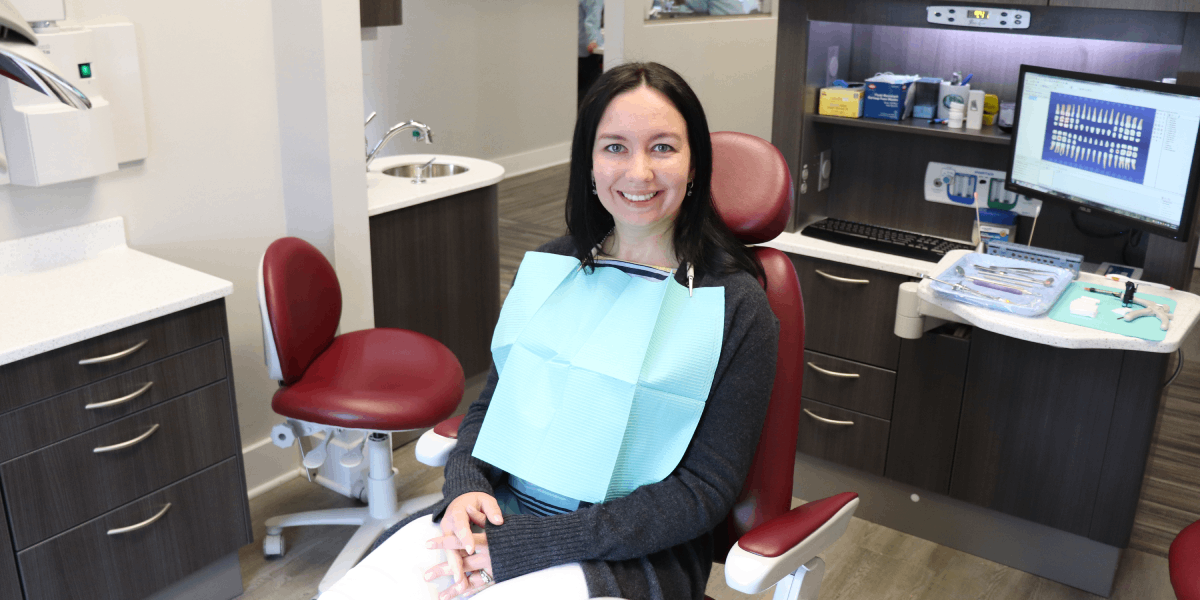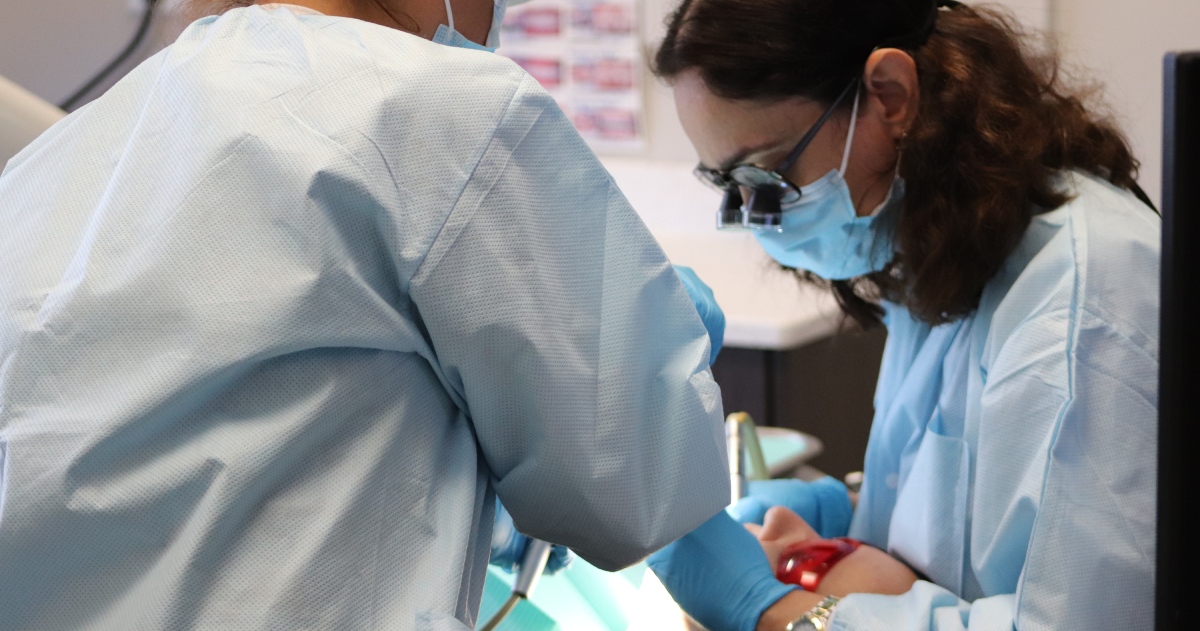Dental World Marietta Location

Dental World Marietta Location provides a full range of dental services in one convenient location. Our dental clinic has the latest equipment and experienced staff to meet your dental needs. We strive for excellence in client satisfaction, and our clients recommend us to their friends. We highly value clients' trust and sincerely appreciate their loyalty. Our doctors are dedicated to the constant improvement of their skills, keeping up to date with the latest dental developments. They always prioritize our patients' health and safety. Please do not hesitate to come to Dental World for all your dental needs.
Request AppointmentAddress
1410 Terrell Mill Rd Marietta, GA 30067
Parking is FREE.
Working Hours
- Monday — Wednesday: 9 am - 5 pm.
- Thursday: 9 am — 6 pm.
- Friday: 9 am — 2 pm.
- Saturday— Sunday: Closed.
General and Family Dentistry

General and family dentistry services help maintain good oral health at any age. We offer routine appointments to all our patients. The dentist focuses on diagnosing dental problems and performing hygiene services during checkups.
Why are Dental Checkups Important?
Preventive dental examinations are essential to monitor the condition of teeth and gums, detect diseases in their earliest stages, and manage the situation with minimal intervention. Visiting the dentist regularly helps to identify early signs of demineralization, which is the initial stage of tooth decay. It does not require surgical intervention, but instead a simple and painless procedure for strengthening tooth enamel.
The same principle applies to periodontal health. It is easier to cure low-grade inflammation than treat progressive periodontitis.
What Can a Dentist Check During a Routine Dental Examination?

- Enamel condition. The dentist evaluates its condition and identifies demineralized, darkened areas, as well as carious lesions.
- The amount of plaque, tartar, and features of their buildup formation. If plaque or tartar forms on the surface of dental crowns, the dentist will adjust your oral hygiene techniques. If these deposits accumulate on only one side, this may indicate an incorrect distribution of the load on the teeth when chewing. Such a feature requires changes in eating habits or orthodontic treatment.
- The presence of wedge-shaped defects. It can be explained by incorrect tooth brushing techniques or the wrong type of toothbrush. In this case, patients need oral hygiene consultation.
- The condition of the oral mucosa. The dentist assesses the burn injuries, mechanical traumas (which may require correction of dietary habits), changes in the structure and surface of tissues. In addition, the examination involves testing for the presence of tumor signs. Oral cavity tumors spread quickly but are easily detected and treated with timely diagnosis.
How Often Should You See Your Dentist?
The frequency of visits to the dentist’s office depends on the condition of the teeth and the extent of the dental decay. On average, it is necessary to go to the dentist every six months. If a person has multiple caries lesions, dental fillings, or dentures in the oral cavity, they may need to come more often than twice a year.
Regular intervals of six months between checkups allow for tracking the dynamics after any treatment process and detecting cavities at an early stage when they are easier to treat.
Some people only need to visit the dentist once a year, sometimes less. The reason is that they have good oral hygiene and a low DMFT (Decayed, Missing, Filled Teeth) index.
Children should also have regular dental checkups. The dentist can provide oral health presentations and teach them proper hygiene skills. Both adults and children should see the dentist regularly to prevent dental diseases.
Request AppointmentGeneral and Family Dentistry Services at Dental World Clinic
- Exams and xrays. Preventive dental visitings present an opportunity to determine the oral health condition and detect the presence of hidden inflammation. Based on the results of the examination, the dentist can also evaluate home oral hygiene care, order additional tests and X-ray examinations of the jaw.
- Cleanings. The most common cause of tooth cavity and gum disease is bacterial plaque. Unfortunately, it is impossible to completely remove dental deposits at home. During a professional teeth cleaning appointment, a hygienist performs a range of services that include plaque and hard tartar removal, enamel polishing. This procedure also restores the natural color of the teeth. It is recommended to get regular dental cleanings without waiting for unpleasant symptoms (bleeding gums and bad breath).
- White composite fillings. A dental filling helps fill a cavity in the tooth and prevent further decay. Specific properties of composite material allow matching the shade of a patient’s tooth.
- White porcelain and zirconia crowns and bridges. This is a restoration solution used for decayed or missing teeth. Zirconia crowns have a number of advantages, including durability and the absence of side effects after installation. Porcelain crowns are made of ceramic material and contain no metal in composition. These structures are the most aesthetic option for restoration, which do not differ from natural teeth.
- Periodontal treatments. The periodontium consists of gums, blood vessels, connective and bone tissue that surround teeth. The periodontium holds teeth firmly in place and nourishes their hard tissues. Inflammation of the periodontal tissues (periodontitis) causes gum sensitivity, bleeding gums, tooth mobility.
- Root canals. The root canal is a chamber within the root of the tooth that contains loose connective tissue (pulp), numerous nerve endings, and blood vessels. If it is required to remove the neurovascular tissue, the tooth loses its strength and becomes more likely to fracture. Hence, root canal treatment is carried out only in case of severe inflammation or traumatic dental injuries.
- Removable partials and dentures. These dental appliances are used to replace a partial or complete set of missing teeth. They are often recommended to patients who have lost a large number of teeth. The most notable advantage of removable dentures is that they can be placed and removed by the patient. This feature unites all removable dentures that come in a variety of types and models.
- Bridges. Dental bridges are used to replace several missing teeth in a row (but not more than 5). They rely on prepared adjacent teeth for support. The installed bridge is made to match the color and structure of natural teeth.
- Dental Crowns. A dental crown is a permanent construction placed over a specially prepared tooth. Specialized technologies allow replacing canines, incisors, premolars, or molars. Dental crowns are used to strengthen severely damaged teeth.
- Children's Dentistry. The complete set of milk teeth forms the proper structure of the jaw. If the child's teeth are prematurely destroyed by dental caries, fall out, or need to be removed, these changes can lead to poor jaw development. Regular dental check-ups can spot early signs of childhood caries and treat them in a timely manner.
Cosmetic Dentistry

The aim of cosmetic dentistry procedures is to provide effective correction of visual defects in the teeth. In most cases, it involves the smile zone, which is visible to other people when talking.
Sometimes overall treatment plans may already include aesthetic goals, and they become part of the procedure itself. For example, professional oral hygiene not only improves the appearance of teeth but also helps to remove the buildup of plaque and tartar that can lead to cavities or gum disease.
Goals of Cosmetic Dentistry
- whiten tooth enamel
- fix scratched, cracked tooth enamel
- close interdental spaces
- correct tooth wear on the chewing surface (caused by bruxism)
- restore missing parts of a tooth
- change tooth shape and/or color
- correct bite misalignment
- replace damaged teeth with prosthetics
- treat gums
What Problems Can Cosmetic Dentistry Fix?
- yellow teeth or natural dark color of enamel
- tooth discoloration or tarnishing
- plaque or tartar buildup
- bad breath
- dental trauma, chips, cracks, tooth abrasion
- malocclusion, crooked teeth, formation of interdental gaps
- partial or complete tooth loss
Cosmetic Dentistry Services at Dental World
- Teeth Whitening. Teeth whitening is a process of lightening the color of enamel using bleaching agents and special equipment. Dental bleaching has no impact on oral health since this process aims to give the teeth an aesthetically pleasing and attractive appearance. It also helps patients achieve more beautiful smiles.
- Composite and Porcelain Veneers. These are dental structures that cover the visible part of the tooth. Veneers are shell-like appliances that cover the front surface of one or more teeth to improve the aesthetics of the smile.
- Porcelain Bridges. An artificial tooth made of porcelain replaces the missing tooth. A dental bridge attaches artificial teeth to adjacent abutment teeth, which are topped with porcelain crowns. This option is often used for restoring teeth in the smile zone. Dental bridges are custom-made for each patient.
If dental imperfections make you feel self-conscious, aesthetic dentistry is something you should consider. We offer a wide range of cosmetic dental services designed to help you achieve a healthy, attractive smile! Our experts will select the treatment options that are best suited to your specific needs.
Request AppointmentSurgical Dental Services

Advances in surgical dentistry techniques provide solutions to complex problems using maxillofacial surgery and oral surgical procedures. This branch of dentistry is allocated in a separate section as it focuses on surgical management of oral problems.
Problems Surgical Dentistry Can Fix
- Emergency tooth extraction.
- A wisdom tooth is not fully-erupted or positioned in the wrong direction.
- Dental injuries and trauma - damaged or broken dental crown, extraction of a residual tooth root, etc.
- Tumors of the oral cavity, bumps or growths on the gums, dental abscesses, non-healing ulcers, cysts, and granulomas.
- Acute inflammation caused by dislodging of the blood clot from the site of tooth extraction.
- The patient needs to change the shape of the gums, correct the gummy smile, and cover exposed roots.
- The patient has an abnormal lingual frenulum or lip deformities.
- The patient is missing one, several, or all teeth and is preparing for implant surgery.
- Sharp attacks of pain in the lower part of the face, inflammation of salivary glands.
- Difficulty opening and closing mouth, joint noise - such as clicking or crunching.
No surgical intervention comes without preparation. Prior to any type of oral surgery procedure, dentists perform a thorough examination of the entire oral cavity and determine the condition of the teeth and roots with the help of dental x-rays. During surgery, patients are given anesthesia, which is selected with consideration of individual patient responses to the administered drugs. The doctor always conducts an assessment to learn about the patient’s tolerance to anesthesia, probability of nausea and vomiting, the presence of chronic diseases (diabetes, high blood pressure), and pregnancy.
Following oral surgical procedures, the oral surgeon will provide detailed instructions and specific hygiene rules on how to achieve the best possible recovery.
Surgical Dental Services at Dental World Clinic
- Implant Crowns. Dental implants are titanium root replacements implanted into the jaw bone. An artificial crown is then attached to the top of the implant to replace the extracted tooth. Dental implants are the most modern method of restoring lost teeth and the aesthetics of the smile.
- Wisdom teeth removal. Wisdom teeth are 4 teeth that grow at the very back of the mouth. These teeth do not fully erupt or grow out at the wrong angle in 75% of cases. This leads to inflammation of the gums, the development of dental caries, or displacement of other teeth.
- Extractions of non-restorable or painful teeth. Dental professionals are using a variety of methods that aim to preserve patients’ natural teeth. Hence, tooth extraction is performed only in more complex cases, or when a patient requires restorative dental work. It may also be the best option to maintain oral health.
- Gum Surgery. In terms of aesthetic appeal and oral health, gums are just as important as teeth. Therefore, there are many specific treatment options that are used for gum disease.
- Drainage of abscess. A dental abscess is an inflammation of the gums that forms around an infected tooth. It may look like a pimple or a bump filled with pus. Abscesses can be quite painful. Treatment for a complex abscess may involve surgery and antibiotics.
- Biopsy. To check them for cancer cells, an oral biopsy is performed. The specialist cuts out a tiny part (incisional biopsy) or most of the suspicious-looking tissue (excisional) under local anesthesia and sends it to an oral pathologist. This sample tissue will then be closely checked under a microscope. Depending on whether it is cancerous or not, you will be prescribed with further treatment or additional checkups.
- Cyst removal. A dental cyst at the root of the tooth is a cavity filled with purulent contents. It can be usually found around the roots of infected teeth and under the gum. The cyst can increase in size, affecting the gums and the inside surface of the cheek. Therefore, the removal of cysts requires surgical intervention.
- Bone grafting and sinus lifts. When a tooth is extracted, the bone tissue in that area can atrophy and lose volume. These changes occur as a result of the absence of biting force. Patients do not have enough bone structure to support the placement of dental implants. Bone grafting and sinus lift help restore bone density and increase bone volume with the help of special material.
- Dental Implants. This is a surgery to install a special dental post in the jaw tissue, that acts as a replacement for the root. Later, the dentist places a crown on top of the dental post. As a result, the missing tooth is completely replaced with an implant.
- Apicoectomy. This is a surgical procedure designed to treat inflammation in the root canal. It involves the removal of the cyst and pus, along with the root tip of the infected tooth. Apicoectomy preserves the function of the tooth. It is usually performed on incisors and canines.
- IV Sedation. During dental treatment, patients are given a drug that temporarily blocks regions of the brain that control fear and anxiety. In most cases, it is similar to a state of superficial sleep. The person is relaxed but can hear the doctor's voice and follow requests. Sedation does not reduce pain sensation but helps to avoid stress and unpleasant memories associated with dental procedures.
- Nitrous Oxide. This gas has a neutral odor and taste. Small concentrations of nitrous oxide cause the patient to relax, feel comfortable, and relieve anxiety. This type of sedation is often used during dental treatment in patients with a gag reflex.
- Exposure and bonding of impacted canine teeth. Retention refers to anomalies of tooth eruption. The tooth may erupt partially or stay entirely encased by the jawbone. Such teeth may not need to be removed but put in place. Treatment planning strategies for tooth retention are individually geared to each patient, based on the general picture of the condition, as well as the structural features of the jaw and dentition.
- Post operative instructions. Instructions for Oral Surgery patients.
What Are The Restrictions After Dental Surgery?

- Do not rinse your mouth for five days after the procedure. It is important to follow this rule since the blood clot that has formed at the site of a tooth extraction can be easily rinsed away. Blood clotting is a vital healing process. If it is dislodged, food particles may collect in the socket and trigger inflammation.
- Patients should avoid any physical activity for the first 2-3 days, even if they are professional athletes. Physical exertion can increase blood pressure, leading to wound bleeding and delayed healing
- Avoid overheating (this includes sunbathing, saunas, and hot tubs). Excess heat causes blood vessels to dilate and provoke bleeding.
- Refrain from blowing your nose, and you should sneeze with an open mouth following surgery on the upper jaw.
- Do not eat hard, spicy, sour, hot foods. Avoid chewing on the surgical site to reduce the risk of damaging the socket and getting food stuck in it.
- You can brush your teeth but avoid removing white film on your gums after dental surgery. This is fibrin, a protein that indicates the normal healing process.
- Dentists often prescribe antibiotics and anti-inflammatory medications after an oral surgery procedure.
The overall risk for postoperative complications is extremely low if surgical procedures performed on the oral cavity were completed successfully and the patient followed all the recommendations and doctor's prescriptions.
Our experienced professionals will be happy to answer your questions, perform diagnostic screenings, and provide the comprehensive surgical procedures you need to restore your oral health. Book your appointment at a time convenient for you using the feedback form.
Reasons You Should Reschedule a Visit to the Dentist
- If a patient is experiencing any flu-like symptoms. Nasal congestion makes breathing difficult and moisturizes excessively the oral cavity. It may negatively impact the process and quality of dental treatment.
- If it falls during a period. Hormonal changes within the menstrual cycle can provoke a decrease in the pain threshold or lead to heavy bleeding during the surgical treatment.
- If a patient has a cold sore. This type of virus is very contagious and can rapidly spread in the oral epithelia after dental treatment.

